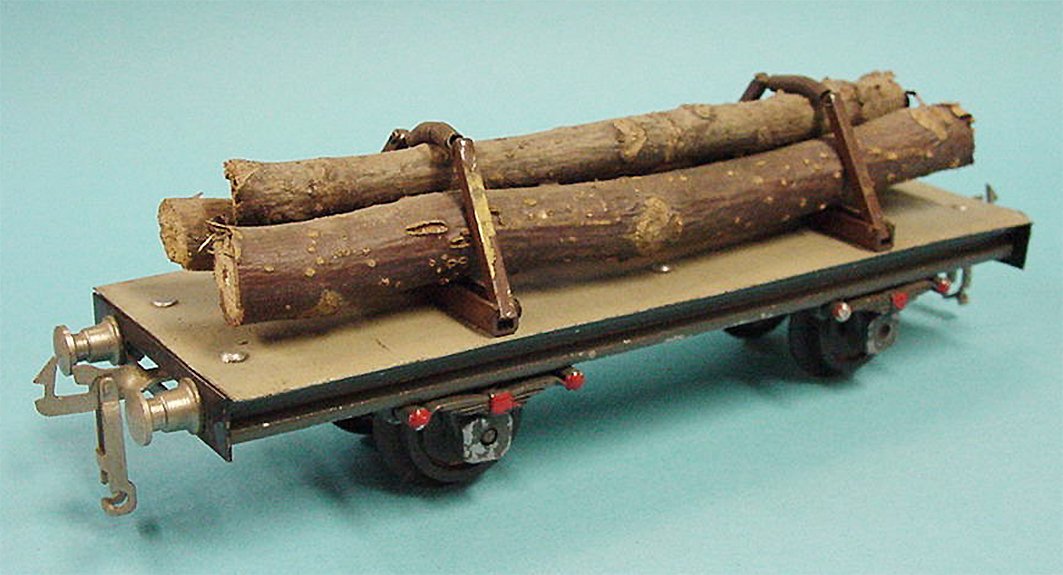
Fabbrica Artigiana Giocatolli Elettrici (FAGE)
Description
Italian manufacturer of 0 and S gauge trains.
FAGE was founded in 1945 in Milan and was in existence for only a few years. They produced two locomotives and a number of goods and passenger cars in O gauge, as well as an S gauge set.
The first loco is a model of the articulated type E636 of the Italian State Railways, which was the first Italian locomotive adopting the Bo-Bo-Bo configuration, with its chassis divided into two articulated parts pivoting on the central bogie. Originally, eight were built between 1940 and 1942, of which six were destroyed during the war. From 1952 to 1962 two further batches were built, bringing the total number of locomotives to 469. As FAGE started in 1945, it stands to reason that their model was based on the original wartime locos. These locos were 18.25 meters long and with a total length of 40 cm of the FAGE, this makes it a 1:45 scale model. The model has two identical diecast zamac chassis, each with its own bogie (of which one is motorized) and connected through lugs and a long pin, inserted from the top of the body. The body, again consisting of two identical pieces, is of pressed tinplate. The other loco is a model of the unarticulated E424, of which three prototypes were built in 1943-1944, with series production only starting after the war with a total of 118 units being built. Again, it is possible FAGE based its model on the original prototype. The real life E424 was 15.5 meters long, which makes the 35 cm long FAGE a 1:44 model. The models have been sighted in brown (the colour the Italian State Railways used fort heir electric and diesel locomotives) and in red. The motor of the locos, of FAGE’s own manufacture, operated on 20 V AC on a three-rail system with all three rails isolated from each other (like the Zeuke and Gils systems).
FAGE produced several items of four-wheeled goods rolling stock: a crane wagon with and without a brakeman’s hut, a flat wagon with and without a brakeman’s hut and with or without an Italian Mercury model car as a load, a flat wagon with stakes and logs or timber, a flat wagon loaded with four oil barrels, a tank wagon, a high-sided wagon and a closed van. There also were four-wheeled passenger coaches, with and without opening doors. All rolling stock had the same diecast aluminium chassis incorporating the axle guards, to which the tinplate body was secured with six rivets, and with screw-on nickel-plated buffers, with a total length of 21 cm. FAGE also made a passenger car and a crane wagon on bogies (trucks), and possibly more.
FAGE’s three-rail system necessitated a special transformer, with three connections for the two outer and the centre rail. The tinplate track is quite sophisticated for its time, with the rails only 6 mm high and a rail head diameter of 2.5 mm, mounted on seven shallow sleepers per length; a circle takes sixteen curved lengths, with a diameter of 160 cm.
In S gauge FAGE produced a “Junior” set, consisting of a 0-6-0 tank loco, two open wagons, two-rail track and a transformer.
Share:

